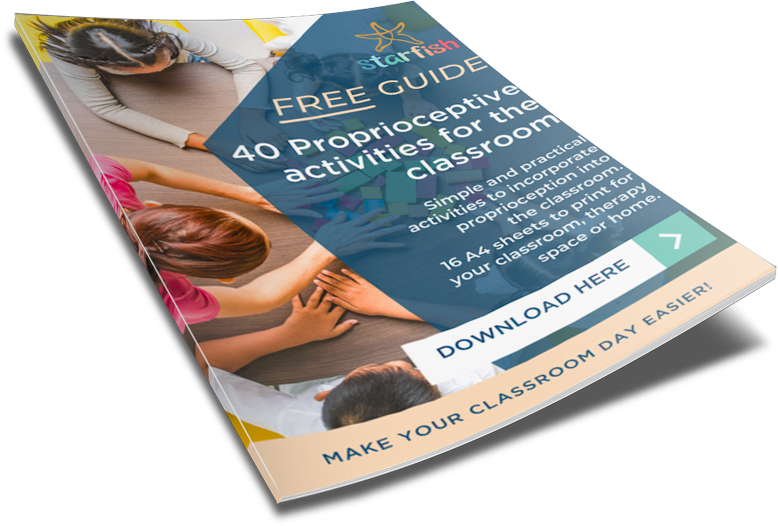Your Cart is Empty
Missed the shipping cut-off? Starfish Gift Cards are delivered instantly. → Shop Gift Cards
Missed the shipping cut-off? Starfish Gift Cards are delivered instantly. → Shop Gift Cards

Confusing the letters b and d is a common issue for many children.
Recognising the letters (and their individual sounds) is vital to reading and being able to correctly form (handwrite) the letters is essential when writing. Being able to automatically and correctly recognise and write the letters b and d has a direct impact on a child’s literacy.
Whether it is mixing up b’s and d’s in reading or writing, or both, we want to address this early ensuring the correct naming or letter formation becomes the entrenched "habit".
We have tried a range of strategies over the years. See the strategies that we use in our specialist tutoring centre to help children and students master their b’s and d’s.
Learning how to recognise and write the letters b and d correctly (and automatically) is important because:
The ability to recognise objects regardless of orientation is essential. Indeed, in primitive times, knowing a sabre tooth tiger is a sabre tooth tiger no matter which way it is facing could be life saving. It is called object constancy or object invariance.
However reading and writing are relatively new in terms of the evolution of human brain development. AND the orientation of some letters does matter.
We need to train our brain, to "unlearn" or "over-ride" our visual perception system to successfully discriminate a b and a d.
The three steps we adopt when teaching children and students to correctly identify and write the letter b and d are:
Detail
We need to draw attention to the differences between b's and d's. We need to explain that orientation matters eg which side the "stick" is on matters.
Strategy
We need to help children figure out (and remember) which letter is which by teaching strategies to support them.
We need to use the strategies chosen and adopted, consistently.
Practice
We need to provide plenty of practice opportunities, often over a period of time, until recognition and formation are mastered to automaticity.

Many of the children and students in our specialist tutoring centre have significant learning difficulties. And we know that they require more explicit instruction and practice to achieve mastery.
Often times, especially with older students, a poor habit has become entrenched. It can take a lot of persistence to "unlearn" a poor habit by replacing it with a new one.
When it comes to teaching, or correcting, recognising & writing the letters b and d, these are the strategies we have found to be the most helpful:
Teach and focus on one letter at a time to mastery.
Usually we focus our attention on the letter b first. Though this can vary, depending on the needs of student. Regardless, always choose ONE letter and focus your attention on that letter.
In the set of alphabet cards we use in tutoring, we add extras of the letter b - to double down on exposure of that letter when using letter/sound naming.

Connect the saying and the writing- connect the sound production (the making of the sound) for the letter b with the writing of the letter b.

Use a mirror to help children see what their mouth is doing when they make the sound of a letter b. This strategy can help learners when reading or writing a b. When reading a letter b, because the letter starts with the line that is the hint to put your lips into a line, which is the prompt to make the /b/ sound. When needing to write a b, we can feel our lips in the straight line (when we are forming the sound say in big), and that is the hint to start the letter with a line.
Two other helpful prompts we often use are:
 “bat before the ball is a b”.
“bat before the ball is a b”.
 Hand gestures.
Hand gestures.
When teaching letter formation, teach them in the "group" they belong to.
For example, the letter d belongs to the anti-clockwise movement group.
c, o, a, d, g, q, s and f.
Give plenty of practice opportunities
Incorporate a variety of different sensory approaches such as magnetic tracing letters, sand trays, sandpaper/textured letters and playdough.

Play games that give loads of practice reading (recognising) or writing the letters b and d.


Find the letter activities. With this worksheet, you can ask your child to put a circle around all the letter b’s OR for a more challenging activity ask them to say the letter sounds out loud.

For many children and students, mastering the recognition, naming and writing of the letters b and d can initially be challenging.
But, with persistence and effective teaching, they will learn to "do" them correctly which will support them in their literacy learning.
If your child or student continues to have difficulties with letter reversals, it may be worthwhile consulting a Behavioural Optometrist.
School Fonts is an excellent website that has all the fonts used by each state/territory.
You can also find excellent resources online through each of the state or territory’s respective Department of Education website (search Handwriting syllabus). The NSW Department of Education have a handy resource that includes a copy of NSW Foundation Style guide and tips for handwriting.
We would love to hear your experiences with students or with your own children.
What have you found helpful?
What problems do you encounter?
Remember to save this post for future reference, and share with your teacher and parent friends. By sharing you truly help us grow. So, thank you.
Kirstie and the Starfish team.
Kirstie Wishart M.Ed (Special Education).
Owner and founder of The Starfish Store. Kirstie’s professional life has included: teaching (in both public and private schools in Australia, New Zealand and Thailand), lecturer and subject coordinator at the University of Wollongong, Educational consultant (working with children and young people with a trauma background), OoHC Case Work Manager, and Specialist Tutor (working with children and young people with significant learning difficulties and/or disabilities).

40 Proprioceptive activities for the classroom. Simple and practical activities to incorporate Proprioceptive into the classroom. 16 A4 sheets to print for your classroom, therapy space or home.